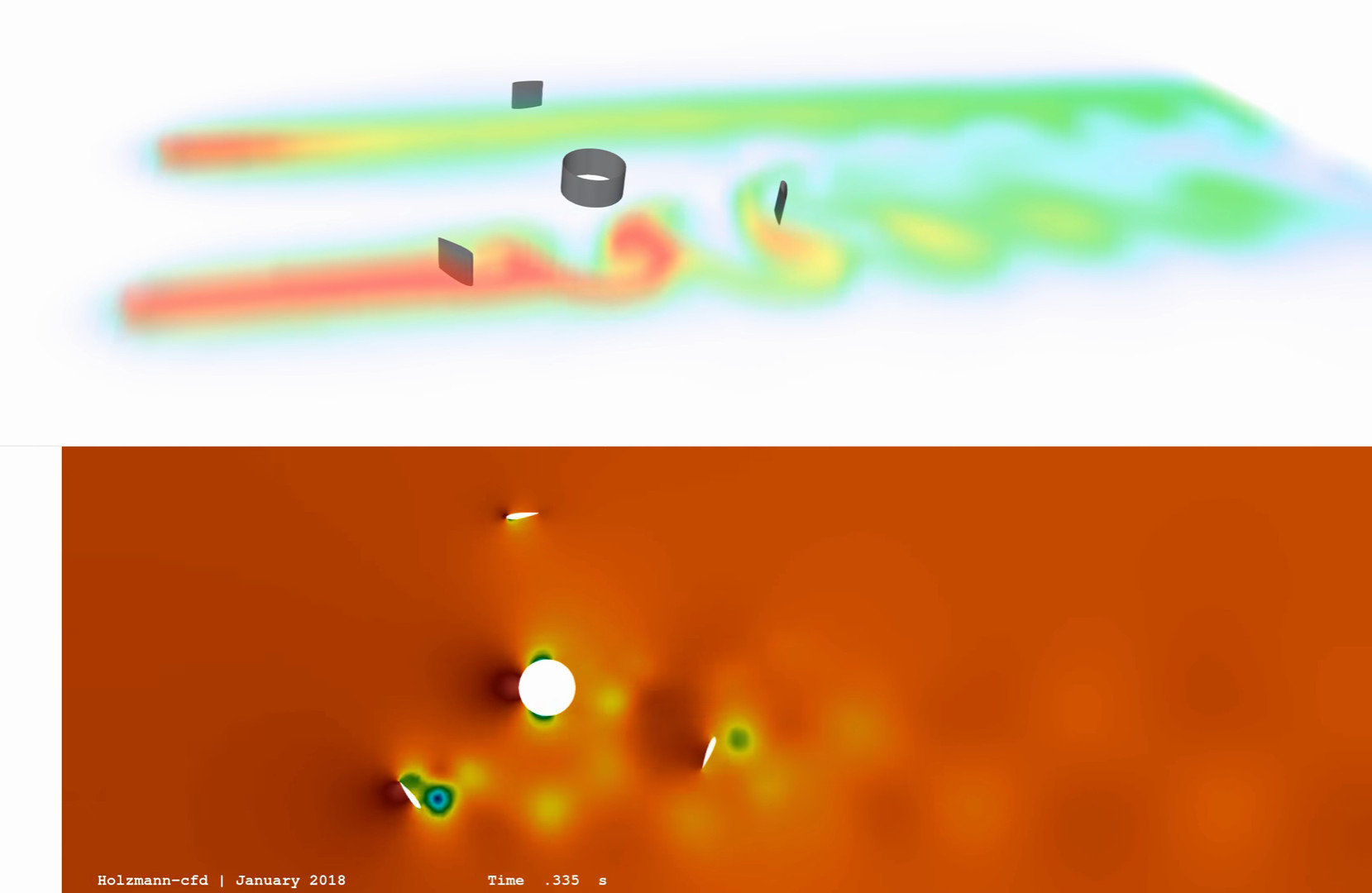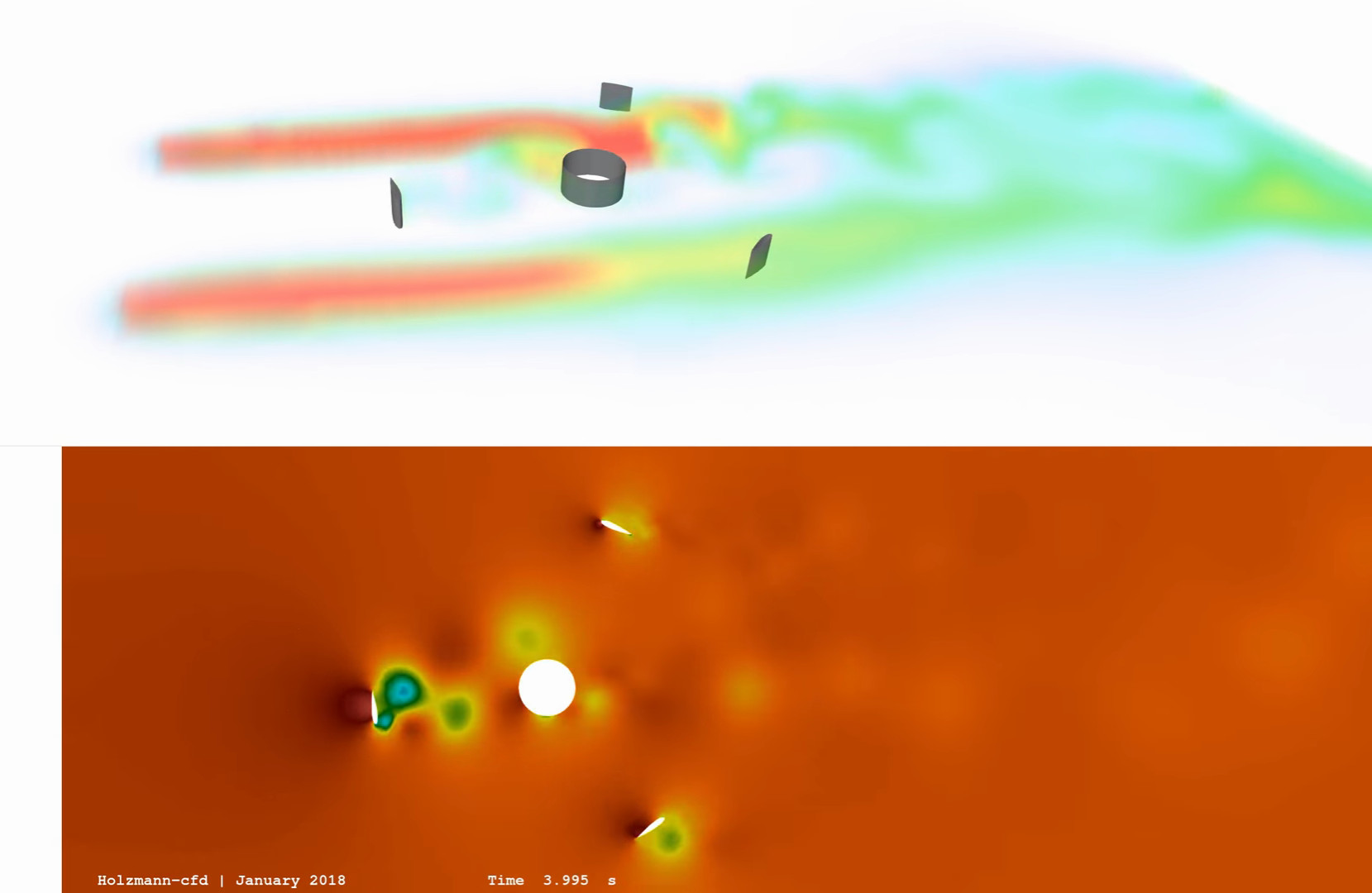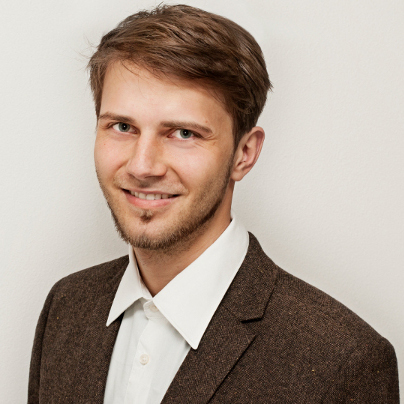Vertical Axial Wind Turbine
pimpleFoam, flow induced rotation, six-degree-of-freedom
For different engineering applications, flow induced rotation scenarios are the main focus. For example one can investigate into wind-turbines and its blade geometry. Commonly, people fix the rotations-per-minute (rpm) of the rotor during the simulation to get a better understanding of the ongoing physics. This is common practice and state of the art. However, it is also possible to allow the fluid to do the work and rotate the rotor based on the pressure acting on the blades, including inertia effects and so on. This case demonstrates a 2D case of such a set-up using the six-degree-of-freedom library in the vertical axial wind turbine (VAWT) scenario.
Flow-induced rotation using the Six-Degree-of-Freedom library
The case demonstrates how to set-up the numerical mesh for the static and moving part using the Arbitrary-Mesh-Interface (AMI) boundary condition. Additionally, the pre-defined set-up of the dynamicMeshDict for the six-degree-of-freedom library is presented with a lot of comments that allows one to understand the physical and numerical parameter much better.



Published under the GNU General Public License 3
Over the last ten years, Tobias tried to publish a wide range of different materials related to OpenFOAM® and CFD. You know it much better than he does if the content is worth to be supported. If you want to thank Tobias for the work he did, feel free to tell the community your opinion about the work Tobias Holzmann is doing or you can email your thoughts directly to »
Support the work of Tobias Holzmann
The available OpenFOAM® training cases are tested and built for different OpenFOAM® versions (not distributions) on a Linux machine. During the tests, only the OpenFOAM Foundation version of OpenFOAM® was used. Furthermore, the following software packages are required for most of the training cases: Salome®, ParaView®, and for optimization tasks, one also needs the open-source software DAKOTA®. The OpenFOAM® cases might work with the ESI version of OpenFOAM® but it is not supported. For the OpenFOAM® extend project, the training cases will probably not work as the code diverged too much. Additionally, there is no support for Windows-based and MAC-based OpenFOAM® versions.
This offering is not approved or endorsed by OpenCFD Limited, producer and distributor of the OpenFOAM software via www.openfoam.com, and owner of the OPENFOAM® and OpenCFD® trade marks
Share the work on Your social network
Tobias would be grateful if you share his work on your social network in order to keep the OpenFOAM® community up to date. Furthermore, sharing the work will avoid that people investigate into topics, that are already prepared for your study such as the examples provided by Tobias Holzmann.


